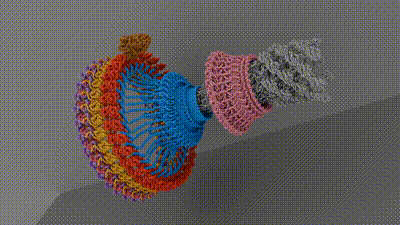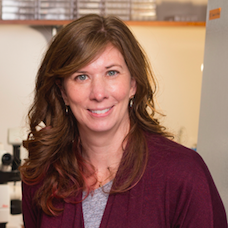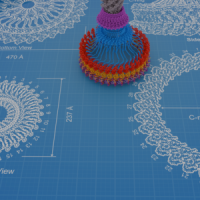In a recent episode of Smarter Every Day, YouTube sensation and host Destin Sandlin talks with Vanderbilt Professor Tina Iverson and Senior Research Associate Prashant Singh about bacterial “motors” and how they work in the microorganisms that make us sick. The video racked up more than 1.4 million views in its first day.
Humans have always battled infections caused by bacteria—everything from abscessed teeth and strep throat to botulism and pneumonia. The single-celled organisms cause about 8 million deaths each year worldwide, and they constantly adapt to resist the antibiotics we have developed to kill them.

Iverson and Singh, with other researchers around the world, learned that bacteria change direction through chemotaxis: a process in which a molecular motor drives a bacterium’s whiplike flagella to act like a boat propeller, pushing the bacteria around to look for food, avoid danger and find comfortable places to multiply—thus causing infections. Understanding chemotaxis, researchers say, may help us learn how to prevent those infections from taking hold.
As antibiotic resistance grows, making infections increasingly difficult to treat, the team is investigating how other bacterial components interact with this motor. Using this knowledge, they seek to develop new treatments for persistent and drug-resistant infections.
“Innovative research like this exemplifies the groundbreaking work our faculty and collaborators are doing to address global health challenges,” says Provost Cybele Raver. “By unraveling the mechanisms of bacterial movement, we are paving the way for novel treatments that can save millions of lives.”
One key characteristic shared by all infectious bacteria is called chemotaxis. Chemotaxis is a versatile process that allows bacteria to swim toward energy-rich molecules, find preferred niches for infection, avoid harmful species, change speeds, and fully stop to form biofilms. Chemotaxis is also essential for virulence in animals and a potential target for new therapeutics. But first, the process itself needs to be better understood.

The lab of Tina Iverson, Louise B. McGavock Professor and professor of pharmacology, in collaboration with researchers at the University of California, San Francisco; Stanford University; and The Weizmann Institute of Science in Israel have published new work in Nature Microbiology, providing new insights on chemotaxis.
Chemotaxis requires a small motor to turn a flagellum—a hairlike appendage on bacteria that spins to provide propulsion, like a boat motor. Rotating the flagellum clockwise or counterclockwise at different rates allows bacteria to move toward or away from different stimuli. Current research hasn’t come up with an agreed-upon architecture of the central components of the motor that powers the flagellum, which has hindered researchers’ understanding of and ability to target chemotaxis with drugs. The current work, spearheaded by senior research associate in the Iverson lab Prashant Singh, puts forth new information about how a motor component called a switch reverses rotation and transmits torque to the flagellum.
To do this, the researchers looked at Salmonella enterica, a bacterium responsible for approximately 60,000 deaths globally per year, as a model. After isolating and purifying S. enterica motors stabilized in different swimming configurations, the collaborators leveraged the power of Vanderbilt’s Titan Krios, a $10M cryo-electron microscope acquired by the School of Medicine Basic Sciences that was made available through the Center for Structural Biology’s Cryo-EM Facility.

The structures provided the researchers with information about how the bacterial motor powers clockwise and counterclockwise rotation of the flagellum, which allows a bacterium to swim straight or switch directions while swimming. It also helped them understand how proteins bind to the motor to help regulate bacterial movement.
These results are applicable to a broad range of infections. For instance, the Salmonella chemotaxis machinery is nearly identical to that of Escherichia coli, which is responsible for over 250,000 infections per year in the U.S. alone. Because chemotaxis is required for infection, selectively disrupting the interactions that allow pathogens to form a reservoir within an organism can help to prevent recurrent infections without impacting the normal microbiome.
The Iverson lab is now working to identify how an expanded range of different protein partners bind to the flagellar motor during chemotaxis, and hope that this will lead to ways to disrupt chemotaxis during infection.
